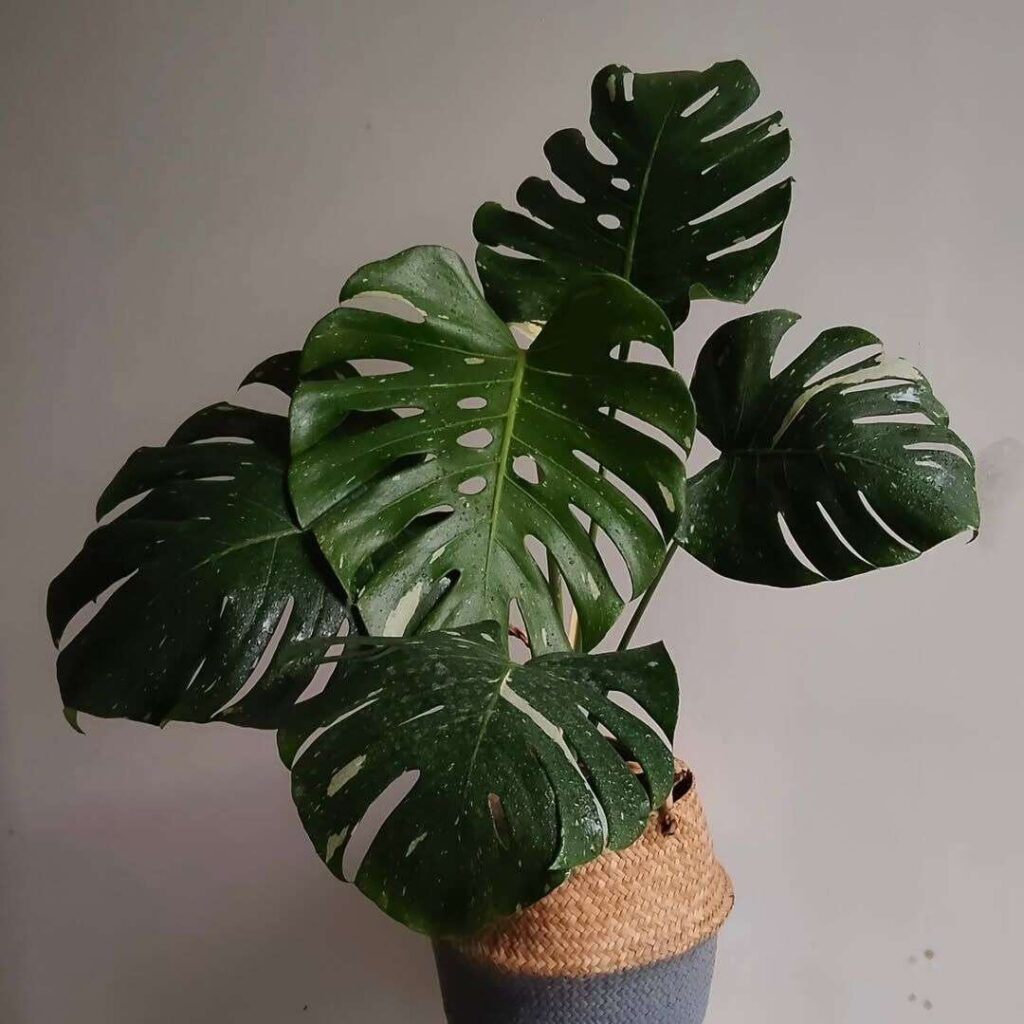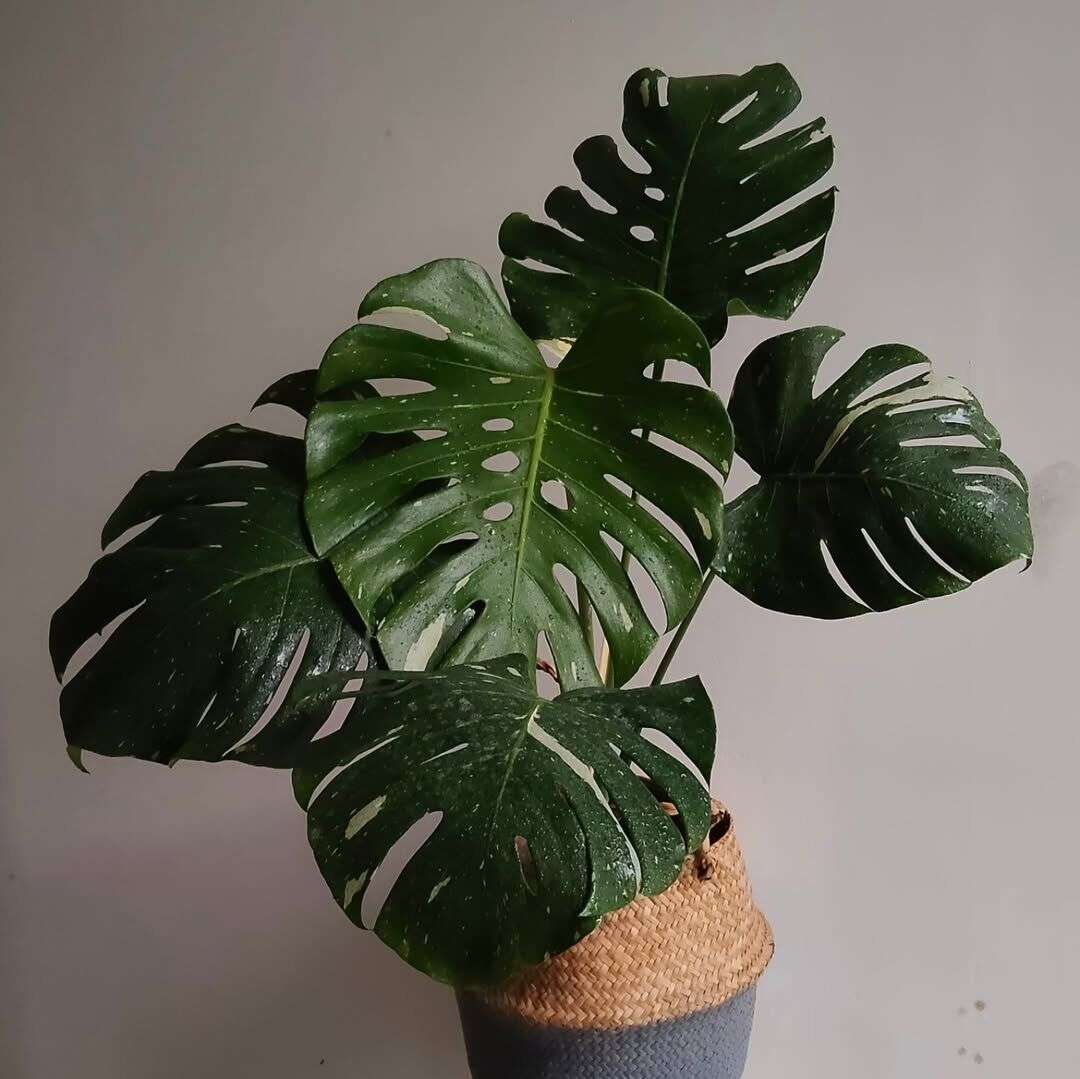If you’re wondering, why are my Monstera’s leaves turning black?, you’re not alone. This common issue can be alarming for plant lovers, but understanding the causes is the first step toward healthy foliage. Black leaves often indicate underlying problems like overwatering, pests, or fungal infections that affect your Monstera’s well-being.
Identifying the exact reason requires close observation of your plant’s environment and care routine. From soil moisture levels to light exposure, each factor plays a crucial role. In this article, we’ll explore the main causes of black leaves on Monstera plants and how to treat them effectively.

Understanding the Causes of Blackening Leaves in Monstera
Overwatering and Root Rot
One of the most common reasons for black leaves on Monstera plants is overwatering, which leads to root rot. When the soil remains soggy for too long, roots suffocate and decay, preventing the plant from absorbing nutrients and water properly. Signs of root rot include blackened, mushy roots and wilting leaves. To prevent this, ensure your Monstera’s pot has good drainage and water only when the top inch of soil feels dry.
Fungal and Bacterial Infections
Fungal diseases such as leaf spot and bacterial infections can cause black spots or patches that eventually spread, turning entire leaves black. These pathogens thrive in humid, poorly ventilated conditions. To reduce the risk, avoid overhead watering, increase airflow around your plant, and remove affected leaves promptly to stop the spread.
Environmental Stress Factors
Environmental factors like cold drafts, sudden temperature changes, or low humidity can also trigger blackening leaves. Monsteras prefer warm, humid environments; exposure to temperatures below 50°F (10°C) may cause leaf damage. Additionally, excessive direct sunlight can scorch leaves, causing dark patches. Monitoring and adjusting your Monstera’s environment helps maintain healthy foliage.
Overwatering and How It Leads to Black Leaves
The Impact of Excess Moisture on Roots
Overwatering is a frequent cause of black leaves in Monstera plants because it saturates the soil, reducing oxygen availability to the roots. Without enough oxygen, roots begin to rot, turning black and mushy. This root rot prevents the plant from absorbing essential nutrients and water, resulting in blackened, wilting leaves. The condition often starts at the leaf tips and edges before spreading.
Symptoms of Overwatering in Monstera
Look for these signs to identify overwatering:
- Soil that stays wet for days
- Yellowing leaves that turn black over time
- A foul smell from the soil indicating root decay
- Soft, darkened roots visible when repotting
Preventing and Correcting Overwatering
To prevent overwatering:
- Use pots with drainage holes
- Water only when the top 1-2 inches of soil are dry
- Choose well-draining soil mixes specifically for Monsteras
If overwatering has occurred, remove the plant from its pot, trim rotten roots, and repot in fresh, dry soil. Adjust watering frequency to avoid future issues.
How Temperature Troubles Affect Monstera’s Leaves
Sensitivity to Cold Temperatures
Monsteras are tropical plants that thrive in warm environments, typically between 65°F and 85°F (18°C to 29°C). Exposure to temperatures below 50°F (10°C) can stress the plant, causing its leaves to develop black or dark brown spots. Cold drafts or sudden drops in temperature disrupt cellular functions, leading to leaf discoloration and damage.
Heat Stress and Leaf Scorching
Conversely, extreme heat or direct sunlight can also harm your Monstera. High temperatures, especially when combined with dry air, cause the leaves to dry out and develop crispy black edges. This is often mistaken for disease but is simply a sign of heat stress.
Maintaining Ideal Temperature Conditions
To keep your Monstera healthy:
- Avoid placing it near cold windows, air conditioners, or heaters
- Maintain indoor temperatures consistently within the preferred range
- Use a humidifier or mist leaves to offset dry heat
Stable temperature and humidity help prevent blackening caused by environmental stress.
The Impact of Light Levels on Monstera’s Leaf Color
Effects of Low Light on Leaf Health
Insufficient light is a common cause of unhealthy Monstera leaves. In low-light conditions, the plant struggles to photosynthesize efficiently, which can lead to weakened leaves that turn dark or black over time. Lack of light often results in slow growth and smaller, less vibrant foliage, increasing vulnerability to disease and leaf discoloration.
Damage from Excessive Direct Sunlight
While Monsteras need bright, indirect light, too much direct sunlight can cause leaf scorching. Intense sun exposure burns the leaf surface, leading to black or brown patches, especially on older leaves. This damage is irreversible and can spread if not managed.
Optimizing Light for Vibrant Leaves
Tips for proper lighting:
- Place your Monstera near east or north-facing windows for gentle, indirect light
- Use sheer curtains to diffuse strong sunlight
- Rotate the plant regularly to ensure even light exposure
Balanced lighting supports healthy green leaves and prevents black discoloration caused by light stress.
Pest Problems and Blackening Monstera Leaves
Common Pests That Affect Monsteras
Several pests can cause blackening leaves on Monstera plants by feeding on their sap or creating entry points for infections. Spider mites, scale insects, and thrips are the most common offenders. These tiny pests suck nutrients, causing leaves to weaken, discolor, and develop black spots or patches.
Signs of Pest Infestation
To detect pest issues:
- Look for tiny webs, sticky residue (honeydew), or small bumps on leaves and stems
- Inspect the underside of leaves where pests often hide
- Notice yellowing or speckled leaves that progress to blackened areas
Managing Pests to Protect Leaf Health
Effective pest control involves:
- Regularly cleaning leaves with a damp cloth or mild insecticidal soap
- Using neem oil or horticultural oils as natural deterrents
- Isolating affected plants to prevent spread
Early intervention stops pest damage and prevents blackening caused by secondary infections.
Fungal Infections and Blackening Leaves
Common Fungal Diseases in Monstera
Fungal infections like Anthracnose, Leaf Spot, and Powdery Mildew are frequent causes of blackening leaves on Monstera plants. These fungi thrive in moist, warm environments and spread quickly through water splashes or poor air circulation. Infected leaves develop dark, irregular spots that enlarge and merge, turning entire leaves black and causing premature leaf drop.
Symptoms and Progression
Early signs include small brown or black spots with yellow halos. As the infection progresses:
- Spots grow larger and may have a fuzzy or powdery texture
- Leaves become brittle and fall off
- New growth can become distorted or stunted
Prevention and Treatment Methods
To control fungal infections:
- Improve airflow around your plant by spacing and pruning
- Water at the base to avoid wetting leaves
- Remove and dispose of infected leaves promptly
- Use fungicides approved for houseplants if the infection is severe
Maintaining a dry, well-ventilated environment reduces fungal risks and helps keep your Monstera’s leaves green and healthy.
Soil Considerations for Monstera with Black Leaves
Importance of Well-Draining Soil
The type of soil you use plays a crucial role in preventing black leaves on your Monstera. Poorly draining soil retains excess water, creating an environment conducive to root rot and fungal infections. A well-aerated, porous soil mix ensures roots receive enough oxygen while allowing excess moisture to escape, preventing blackening caused by overwatering.
Ideal Soil Composition
Monstera thrives in soil that mimics its natural tropical habitat. A good mix typically includes:
- Peat moss or coco coir for moisture retention
- Perlite or orchid bark for drainage and aeration
- Compost or well-rotted organic matter for nutrients
Checking and Improving Soil Health
Regularly check your soil’s condition:
- Avoid compacted or soggy soil
- Repot every 1-2 years with fresh soil to refresh nutrients and drainage
- Use a moisture meter to help time watering accurately
Healthy soil supports root function, reducing black leaves caused by moisture imbalances or nutrient deficiencies.
Nutritional Deficiencies and Their Effect on Monstera
Key Nutrients for Monstera Health
Monstera plants require a balanced supply of nutrients such as nitrogen (N), potassium (K), phosphorus (P), and magnesium (Mg) to maintain vibrant, green leaves. Deficiencies in these nutrients can weaken the plant’s defenses and cause leaf discoloration, including black spots or edges.
Common Deficiencies and Symptoms
- Nitrogen deficiency leads to yellowing leaves that can turn black if untreated.
- Potassium deficiency causes leaf edges to blacken and curl.
- Magnesium deficiency results in interveinal yellowing with eventual browning or blackening.
Addressing Nutrient Deficiencies
To correct these issues:
- Use a balanced, water-soluble fertilizer formulated for tropical plants, applied every 4-6 weeks during the growing season
- Incorporate organic matter or slow-release fertilizers in the soil
- Avoid over-fertilizing, which can cause nutrient burn and black leaf tips
Proper nutrition promotes strong growth and reduces the risk of blackening caused by deficiencies.
How Monstera’s Aging Process Affects Leaf Color
Natural Leaf Aging Cycle
As Monsteras grow, older leaves naturally age and eventually die off. During this aging process, it’s common for leaves to change color, turning yellow, brown, and sometimes black before falling. This is a normal part of the plant’s lifecycle and not necessarily a sign of poor health.
Signs of Aging vs. Disease
Aging leaves typically:
- Are the oldest leaves near the base of the plant
- Show gradual discoloration starting from the edges or tips
- Fall off without other symptoms like spots or wilting on younger leaves
If blackening occurs suddenly or affects new leaves, it may indicate stress or disease rather than normal aging.
Managing Aging Leaves
To maintain plant health:
- Regularly prune yellowing or blackening older leaves
- Focus care on new growth by providing proper light, water, and nutrients
- Understand that leaf drop is natural and helps the plant focus energy on new leaves
Recognizing normal aging prevents unnecessary worry about blackened older leaves.
Final Thoughts
Blackening leaves on your Monstera can stem from various factors, including overwatering, temperature stress, pests, and nutrient imbalances. Understanding these causes helps you take targeted action to restore your plant’s health. Maintaining proper watering habits, stable temperatures, balanced nutrition, and good air circulation will keep your Monstera thriving. Regular monitoring and timely care ensure vibrant, green foliage for years to come.

I’m Shofi, a passionate gardener and blogger. I have 10+ years of experience in gardening and hold certifications in horticulture and garden design. I share my knowledge and skills through my garden blog to inspire and educate others on the joys of gardening. I try to provide valuable information and create a community for gardeners of all levels to connect and learn. My ultimate goal is to inspire others to start their own gardens and connect with nature.

